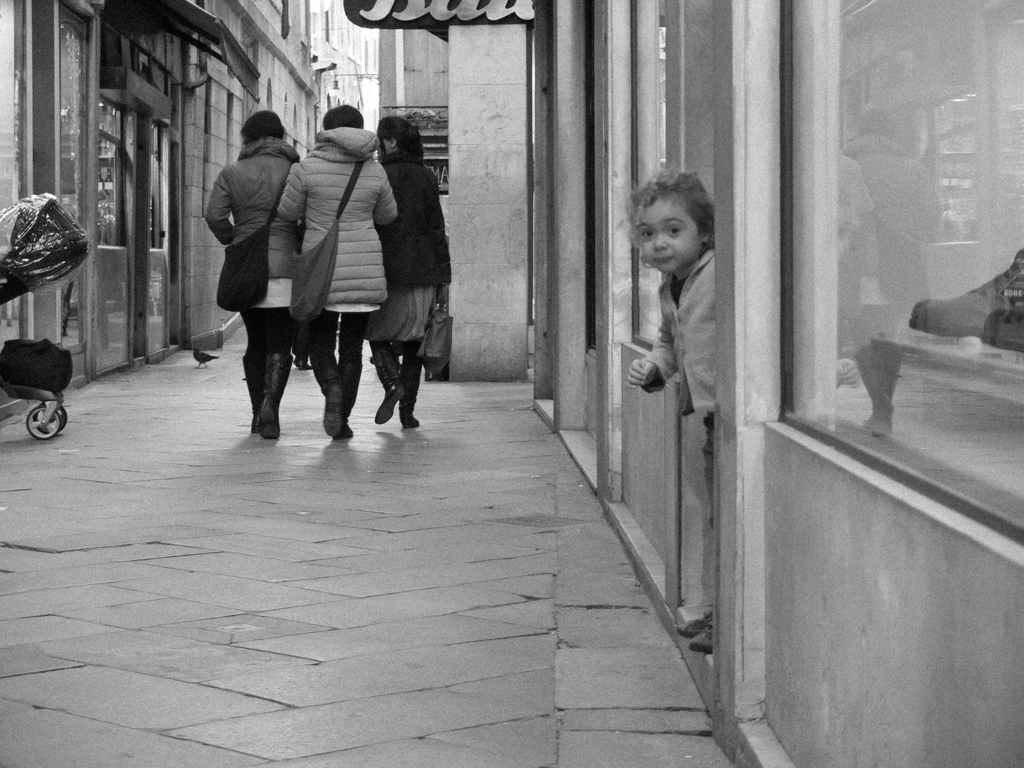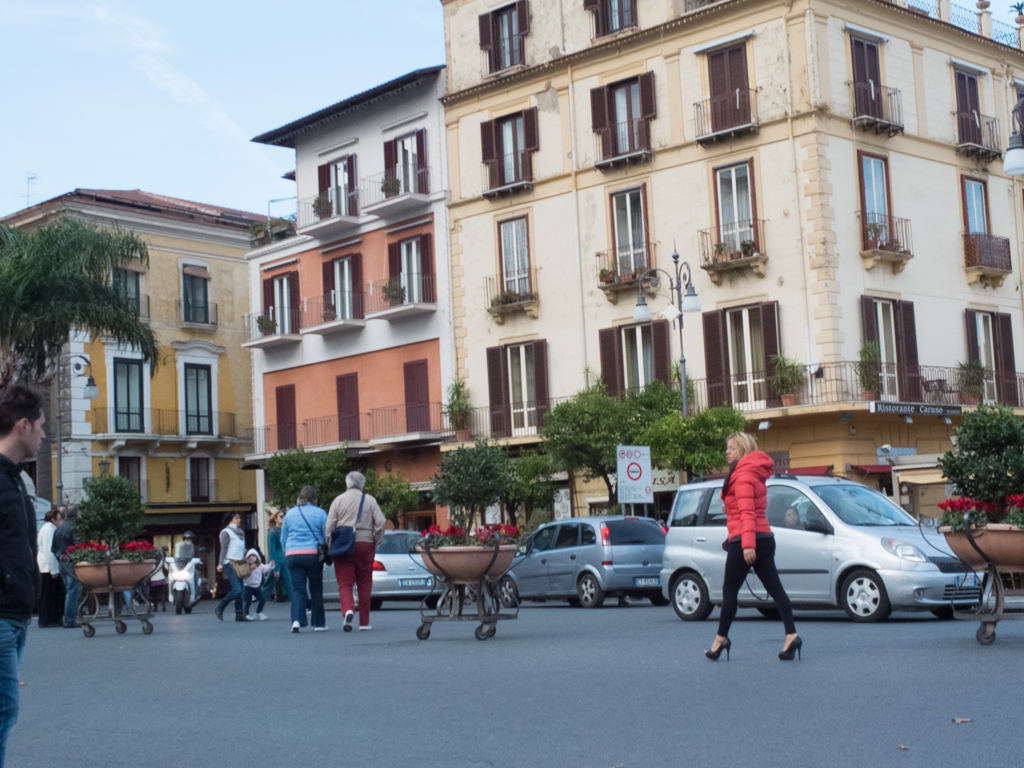We took a train ride to Sorrento from Rome. Actually, two: one from Rome to Naples and another from Naples to Sorrento. The second train, Circumvesuviana, is more like a subway train than an inter-city train; complete with graffiti. Naples is quite different than Rome. To me, the difference between Rome and Naples is the difference between Manhattan and Brooklyn (not that there’s anything wrong with Brooklyn). We didn’t venture into Naples this time around.
Sorrento. Sleepy little town that has bouts of livelihood mostly during the late afternoon and evening. This is a town of the lemon; and the fragrance makes it evident. There’s limoncello flowing out of the fountains in the piazzas and some restaurants offer a complimentary shot after dinner.
We stayed at the very modern, but affordable, Ulisse Hostel (named after Ulysses). We had a bit of a problem with the lights in our room: they kept turning off. We were told that putting our key card in the slot on the wall at the entrance to the room turns on the lights. What we didn’t know is that it has to stay in the slot. This way, you won’t forget your key when you leave the room and the lights will automatically turn off (as with everything else in the room) when the key is removed. Nice.
It was very easy and quite quick to explore the main part of town where tourists and locals flock. Interestingly enough, locals stick to the main strada, Corsa Italia, while tourists venture into le strade piccole. This is where most of the small shops and restaurants are and this is where tourists will spend most of their money.
As mentioned before, limoncello is everywhere and in almost everything. We had straight limoncello, limoncello cream, almonds covered in a hard limoncello shell (this, by far, was the most addictive caramello we had), chocolate filled with limoncello, and limoncello drenched cake called baba (this cake is usually drenched in rum).
Though a small town, Sorrentonians (I just made that up) are just as fashionable as Romans. The stores on the main road sport the latest fashions. We didn’t shop much, but we did have a killer calamari fritta at il ristorante La Fenice.
We were told that Sorrento is a very old town and the that town we see is more like “Sorrento 2.0”. I indadvertedly discovered the “Sorrento 1.0” main piazza while on a casual walk. The piazza is about 200 feet below the current town and it’s not accessible, though it would have been cool if it were. All that is left is a building and a road next to it that leads to nowhere. I found it beautiful.
We chose Sorrento as a springboard to the Amalfi coast. Ah! Amalfi! Il nostro viaggio su la strada costale, portato un sorriso ai nostre faccie. We took a pulman to the town of Amalfi, by passing the equally impressive town of Positano. These two towns are built on the coast on the side of the mountain. They have tiny ports, but they are all charm. Though not much to do, we explored the port area and ventured through the tiny and labyrinthical streets. Amalfi even has their own duomo. We had an early dinner and, later, some gelato (very different from what we know as ice cream). We then headed back to Sorrento.
The main reason for the Naples layover was for Pompeii. This was a childhood dream of mine ever since I read about it in science magazines (I think it was “Scientific American”, which I had a subscription to as a kid (read: nerd)). It only took me about…I don’t know…thirty-five years to make it a reality. We also planned to visit Capri and its grotto, but most of the tour boats had stopped running. We took the Circumvesuviana back towards Naples, but stopped halfway at the Pompeii Scavi stop. The ruins are just 50 meters to the right of the train station.
Pompeii, for its time, was a technological marvel. They had a sophisticated plumbing system that gave rise to many creature comforts. They also had a slew of fast-food joints as well as bakeries (the ovens look remarkably like today’s pizza ovens), spas and brothels complete with beds and pillows; albeit, made of stone (okay, that last one is given in most civilizations). It takes most of one day to explore every nook and cranny. It is huge. It took us about three hours to explore a “streamlined tour” using Rick Steves’ book.
The official story is that Mount Vesuvius (Mr. “V”, to the locals) blew its top and covered Pompeii with hot ash and rocks killing everybody and destroying the city. Not all damage was caused by Mr. V (who, incidentally, “pities da fools”); Pompeii was hit by a massive earthquake seventeen years before “the event”. You can see evidence of this: unfinished chiseled columns, incomplete building and street repairs, etc. As with Sorrento, Pompeii has a 2.0 version on the non-Mr. V side of the ruins. To me, that’s still too close for comfort. Besides Pompeii, there is Ercolano (Herculeum), which is not as big, but takes some time to explore. We didn’t ventured into this region. We are planning on cutting our Milan trip short just to be able to do another day trip to Pompeii/Vesuvius when we arrive in Rome. But next, we take a plane to Venice.
Ciao!

